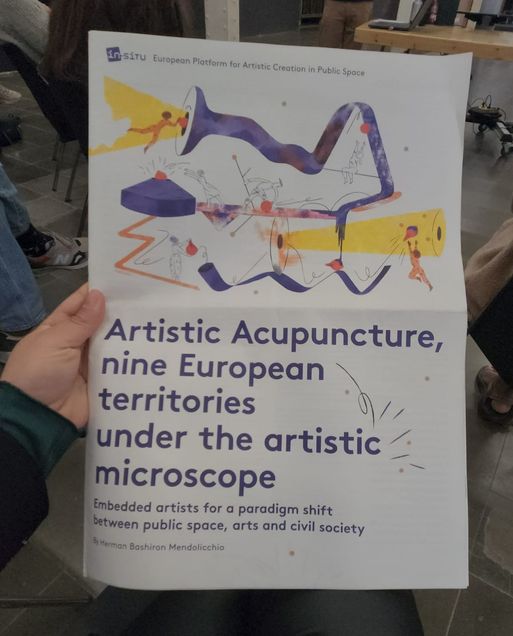March 8: Arts and Culture with Herman Bashiron

Transversal, utopian, Artistic Acupuncture, these are some of the terms that were introduced and continue to float around in my mind from today’s lecturer. The stimulating and provoking exchange with Herman Bashiron was inspiring to say the least, leaving me with a new and exciting perspective of the possibilities and innovative ways of working and existing not only in the art management world but also as an artist and a human.
Herman opened his introduction of what he does with “people are the most important element,” stressing the importance of connection, exchanges, and interaction with those who one works for and works with. This ideology of connecting with the community and bringing the outside in and vice versa is something that has been echoed throughout every institution we have had the pleasure of visiting. However, Herman, brings it one step further, expressing the importance of sustainability and of regaining connection with nature. For example, connecting artist and overall creatives, with different landscapes to provoke new thoughts and creativity.

Herman has a diverse background not only geographically but professionally, as a professor in cultural management at the university of Barcelona, a researcher, an art historian and as a curator. You can tell by the many projects that he has been, and continues to be a part of, that he lives in the hyphen; working transversally (as he would say) in the intersection of research, creativity, management, and holistic approaches. Herman truly is redefining what it means to work in the arts by testing and experiencing different models.
His projects are so fascinating I’m still envisioning artists as needles puncturing specific areas on a map from his project “Artistic Acupuncture” (https://www.in-situ.info/narratives/artistic-acupuncture-nine-european-territories-under-the-artistic-microscope). A project where he enhances cultural exchange by creating art spaces where they don’t exist. Generating social and community engagement simply by penetrating a public space with a little art exposure and/or access. And I’ll never be able to look at a souvenir again without thinking of his project “Souvenir” (https://espaisouvenir.com/who-we-are), a space Herman helped curate for artistic and cultural collaboration. In this space, artists of different nationalities are invited to Spain to create art and exhibit the memory of their journey.

Herman’s projects are not just impactful but essential. I hope that one day with more innovative ways to grow cultural exchange, and with new models of existing not only in the art sector, but in the world, the artist will arrive before the stone.
There is so much more to say about Herman’s work and the arts and culture sector of Spain, but I’ll just leave you with some questions for you to answer:
“What does transversal education mean to you?”
“What does it mean to work internationally?”
“What is utopian for you?”

Author: Lizbeth Cabral